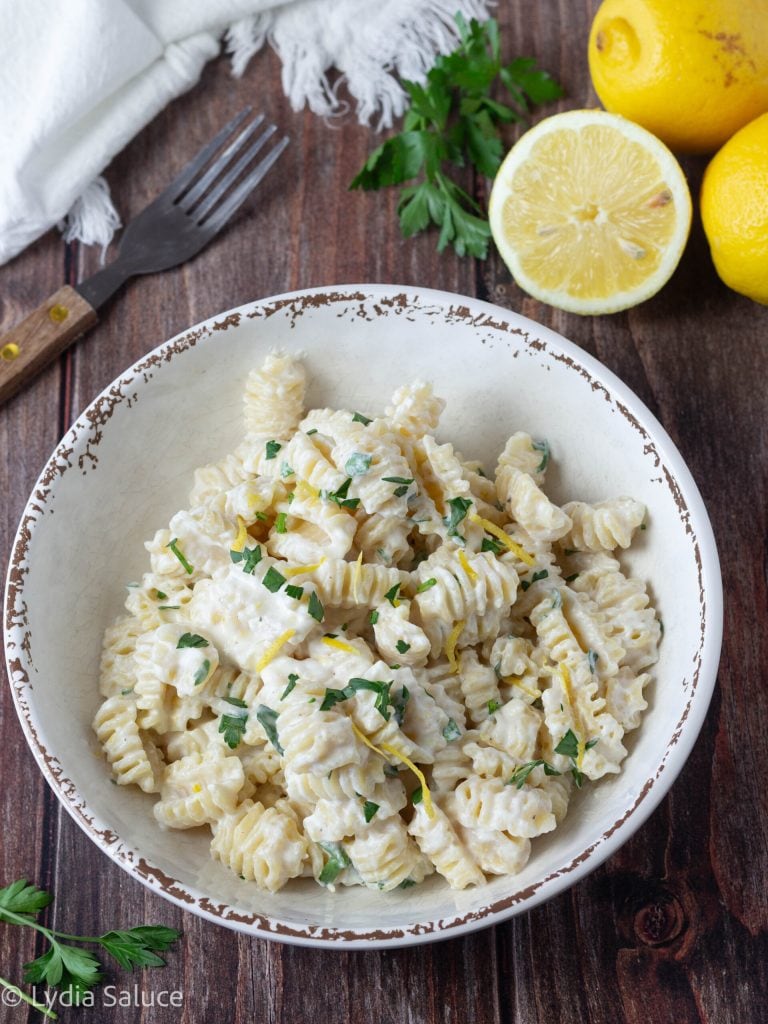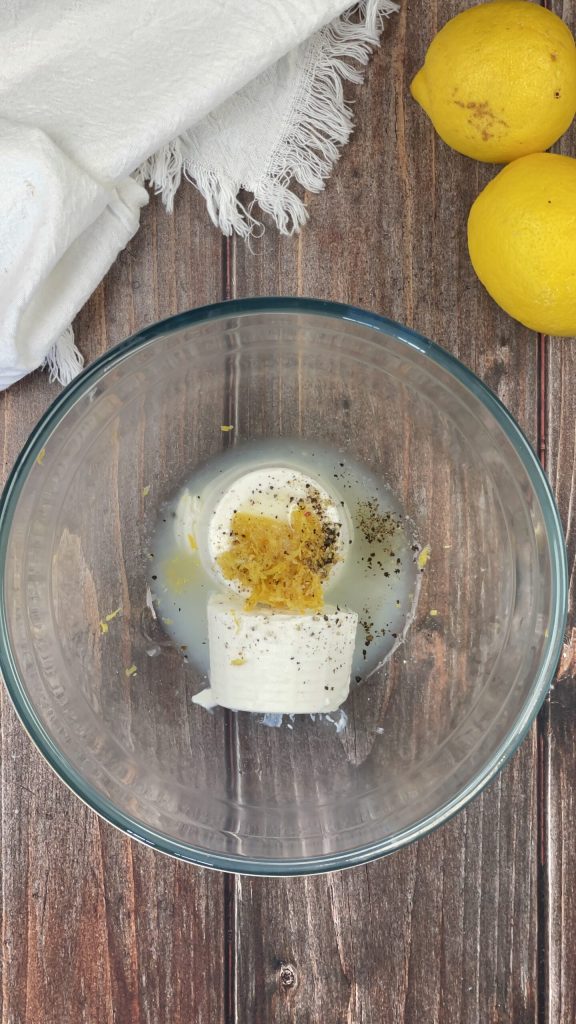Pasta with Lemon and Ricotta, a delicious and light dish, prepared with simple steps in no time.
It’s the perfect combination of the freshness of lemon and the creaminess of ricotta, which come together to create a balanced and irresistible flavor.
It’s a versatile dish that can be enjoyed as a light first course or as a single dish, perfect for spring and summer days or for a quick and tasty lunch throughout the year.
The recipe is quick and simple: you can prepare the sauce conveniently during the pasta’s cooking time!
At the end of the recipe, in the FAQ section, I have answered some questions about preparing this first course. If you still have doubts or curiosities, you can write to me with a comment or use the appropriate contact form.
You might also like:

- Difficulty: Very Easy
- Cost: Cheap
- Preparation time: 5 Minutes
- Cooking methods: Stovetop
- Cuisine: Italian
- Seasonality: All Seasons
- Energy 242.13 (Kcal)
- Carbohydrates 27.08 (g) of which sugars 0.86 (g)
- Proteins 12.01 (g)
- Fat 9.33 (g) of which saturated 4.70 (g)of which unsaturated 2.53 (g)
- Fibers 1.73 (g)
- Sodium 359.45 (mg)
Indicative values for a portion of 200 g processed in an automated way starting from the nutritional information available on the CREA* and FoodData Central** databases. It is not food and / or nutritional advice.
* CREATES Food and Nutrition Research Center: https://www.crea.gov.it/alimenti-e-nutrizione https://www.alimentinutrizione.it ** U.S. Department of Agriculture, Agricultural Research Service. FoodData Central, 2019. https://fdc.nal.usda.gov
Ingredients for Pasta with Lemon and Ricotta
- 11 oz pasta
- 7 oz ricotta
- 1 lemon (zest and juice)
- 2 tablespoons grated Parmesan cheese
- 1 sprig parsley
- to taste salt
- to taste black pepper
- 1 tablespoon extra virgin olive oil
Tools
- Bowl
- Grater
- Lemon Squeezer
- Pot
- Colander
Recipe for Pasta with Lemon and Ricotta
Start preparing the pasta with lemon and ricotta by putting on the pasta water: the preparation of the sauce will take no more than 5 minutes!
Place the ricotta in a bowl.
Add the zest and juice of an untreated lemon.
In the bowl with the ricotta, also add the extra virgin olive oil, salt, and black pepper.
Finish with two tablespoons of grated Parmesan cheese.
Mix well until you have a smooth cream.
When the water boils, add salt to the pot and throw in the pasta, you can choose the format you prefer.
Once al dente, drain the pasta directly into the bowl with the sauce, making sure to set aside a little cooking water.

Mix with a spoon until the pasta is perfectly seasoned; if needed, you can add a little pasta cooking water.

Transfer the pasta with lemon and ricotta onto plates, adding if desired some fresh chopped parsley and a little more lemon zest.

Pasta with Lemon and Ricotta
Check this section to clear up your doubts; if you can’t find the answer to your question, comment or write to me using the form below.
With lemon, I’ve also prepared Lemon and Saffron Risotto!
FAQ (Questions and Answers)
What type of ricotta do you recommend?
Any type is fine and it depends on your taste: if you want a stronger flavor, opt for goat ricotta; if you prefer a milder taste, choose cow ricotta.
Can I also use lime?
Yes, but the tart flavor will be more intense.
Is long pasta okay too?
Yes, you can also opt for formats like linguine or spaghetti.
With ricotta, you can also prepare Ricotta and Sun-dried Tomato Cream.
For requests, questions, and collaborations, you can write to me here:
[contact-form-7 id=”d8b7d03″ title=”Contact Me”]


